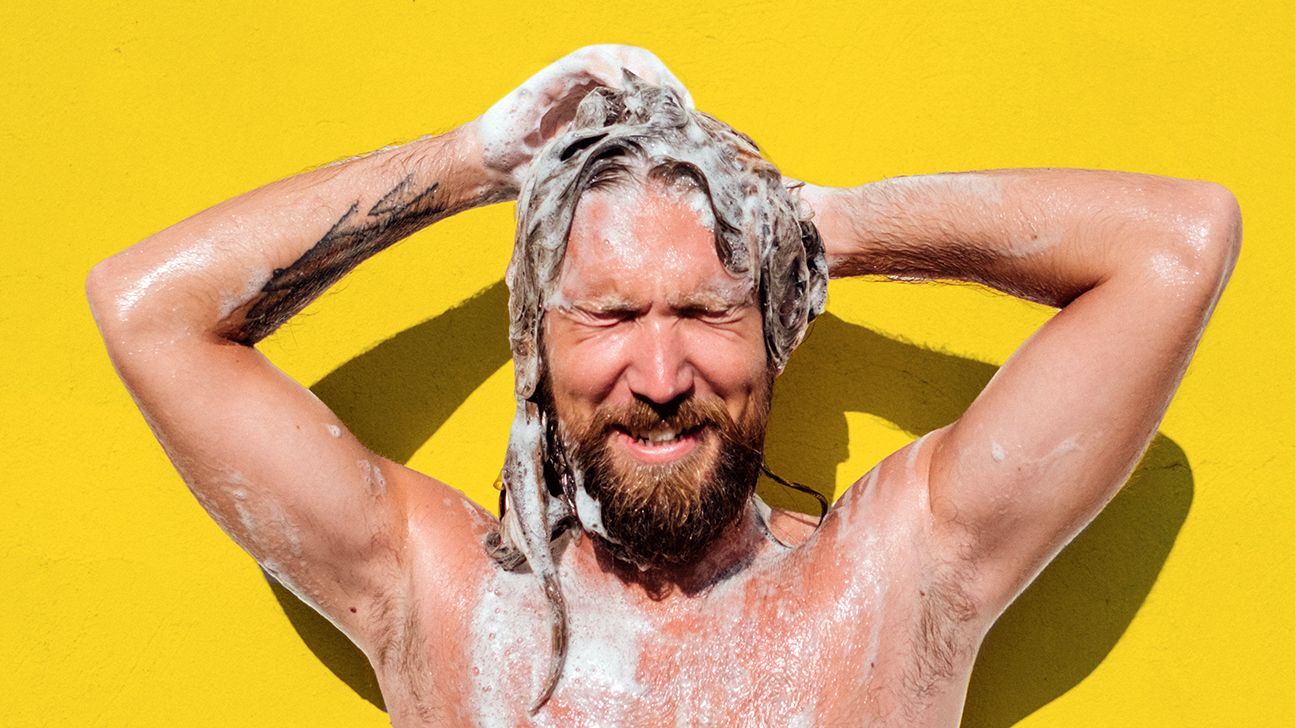Dealing with persistent dandruff or unusual dark patches on your scalp? Ketoconazole shampoo might be able to help.
No, it’s not a keto diet for your hair. Ketoconazole shampoo is a medicated shampoo designed to treat itching and flaking. It can also clear up fungal infections that sometimes cause scalp discoloration.
While using the stuff is relatively straightforward, it’s worth learning a little more about before you start lathering up. Here’s a look at what ketoconazole is, how it works, how to find the right product for your scalp issue, and how to apply it while minimizing the risk for irritation.
Let’s begin!
Ketoconazole is an antifungal medication used to treat a variety of skin infections.
It comes in cream or ointment form for problems like jock itch or ringworm. But it’s also available as a shampoo for dandruff, flaking, and itching caused by seborrheic dermatitis (a form of eczema) as well as tinea versicolor, a harmless fungal infection marked by dark patches.
How exactly does it work? Ketoconazole belongs to a family of antifungal meds called imidazoles, which slow the growth of infection-causing fungi that can cause flaking or discoloration on the scalp. It only fights fungi topically, and it’s not absorbed internally.
And it’s pretty easy to track down. Ketoconazole shampoos are available both over the counter (OTC) and as a prescription, depending on the strength you’re looking for.
Though if you’re not sure what concentration would work best for your particular scalp issue, it’s worth checking in with your dermatologist before sudsing up.
All ketoconazole shampoos basically work the same way. Some just have a higher concentration of ketoconazole, which makes them more powerful than shampoos with a lower concentration of ketoconazole.
That’s not to say you should automatically go for the heavy-duty stuff. Like with all meds, you can definitely get too much of a good thing, so more isn’t automatically better.
- Ketoconazole 1 percent is typically used to treat dandruff, including dandruff caused by seborrheic dermatitis. Options like Nizoral Anti-Dandruff Shampoo are available over the counter and are meant to be used a few times a week for a short period of time.
- Ketoconazole 2 percent is typically used to treat fungal infections like tinea versicolor. Designed to be a one-time use treatment, it’s only available by prescription.
The good news: Ketoconazole shampoo is generally considered safe and won’t pose any major risks to most people. But it can have some annoying side effects, and certain people may need to steer clear.
Most commonly, lathering up with ketoconazole shampoo can cause an itching, stinging, burning sensation. The irritation is usually relatively mild, but if it becomes severe, you should stop using the shampoo and touch base with your doctor.
It also has the potential to cause scalp dryness, oily or dry hair, scalp blisters, a change in hair texture, or hair loss.
In rare cases, ketoconazole can trigger an allergic reaction ranging from a rash, hives, or redness and swelling to life-threatening symptoms like trouble breathing or swallowing.
Again, you should stop using ketoconazole ASAP if you suspect that you’re allergic to it.
As for who’s best off avoiding the stuff? You shouldn’t use ketoconazole shampoo if you’re pregnant or breastfeeding, since experts can’t say for sure that it’s safe. It’s also not for people with known allergies to other antifungals like itraconazole or miconazole.
Having a food allergy or an allergy to sulfites, dyes, or preservatives could make you more susceptible to having an allergic reaction to ketoconazole. So you should definitely talk over your allergies with your doctor and get the green light to use the shampoo before lathering up.
Also important: Since ketoconazole can irritate your scalp, avoid any other products that could potentially make your scalp even more sensitive. That includes harsh soaps or shampoos, hair dye or bleach, waxes, or any products containing alcohol or astringents.
Ketoconazole shampoos work sorta like regular shampoos, just with a few extra instructions. What you’ll need to do exactly depends on whether the ’poo you’re using contains a 1 percent or 2 percent ketoconazole concentration.
In both cases, make sure you don’t have any open sores or irritation on your scalp. And wash your hands well before and after applying.
Using 1 percent OTC ketoconazole shampoo
- Wet all of your hair well.
- Apply the shampoo and gently rub to form a lather, just like regular shampoo.
- Rinse well and repeat.
Use every 3 to 4 days for up to 8 weeks, then as needed to keep dandruff in check. (You should start to notice in improvement in 2 to 4 weeks.) It’s fine to use your regular shampoo in between.
Using a 2 percent prescription ketoconazole shampoo
- Wet the area of your hair where you plan to apply the shampoo.
- Apply the shampoo to the affected area and gently rub to form a lather.
- Let the shampoo sit for 5 minutes (don’t leave it on for longer) and rinse well.
Prescription ketoconazole is only meant to be used once, but it could take a few months for your fungal infection to fully clear up.
tl;dr
Ketoconazole shampoo can be a good option for clearing up serious dandruff or certain fungal infections on your scalp. But it can take some time to work and it might cause irritation to your scalp.
Be sure you’re using the right concentration and follow the directions exactly. And if you have any questions or run into an issue, talk with your doctor.


